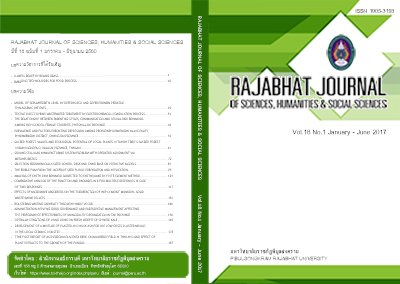SACRED FOREST: VALUES AND ECOLOGICAL POTENTIAL OF LOCAL PLANTS IN TAIYOH TRIBE’S SACRED FOREST IN BAAN NONGPA-O, KALASIN PROVINCE, THAILAND
Keywords:
ภูมิปัญญาทางนิเวศ, ป่าศักดิ์สิทธิ์, การดูดซับคาร์บอนไดออกไซค์, Ecological wisdom, sacred forest, carbon dioxide absorptionAbstract
This research aimed to study the traditional ecological wisdom and ecological potential by focusing on the biomass, carbon storage and carbon dioxide absorption of local plants of Taiyoh’s sacred forest in Baan Nongpa-O village, Kalasin Province, Thailand. This research integrated the methodology of forest ecology and ethno ecology. The plants surveyed were undertaken in 30 sampling plots of 10x10 m., trees (DBH>4.5 cm) were identified and measured, then applied to qualitative research procedure through observation, in-depth interviews of key informants and focus group discussions, during April-September 2015. The findings: Taiyoh tribe of Baan Nongpa-O has traditional ecological knowledge, important to spiritual dimensions: man, spirit and nature are all related and inseparable. When Taiyoh of Baan Nongpa-O settled down, they also chose a nearby forest for village ghosts (spirit) or god (deva)’s living place to oversee and protect the villagers. The forest is well taken care of and became sacred forest to conserve biological resources and local plant diversity. The sacred forest has 20 families, 27 genera and 29 of tree species. The total biomass was 118.92 tons/ha, equivalent to 59.47 tons carbon/ha and 218.26 tons carbon dioxide /ha. This forest is an important source of local plants also the spiritual center of Taiyoh people of Bann Nongpa-O village.
Downloads
Additional Files
Published
How to Cite
Issue
Section
License
Each article is copyrighted © by its author(s) and is published under license from the author(s).










